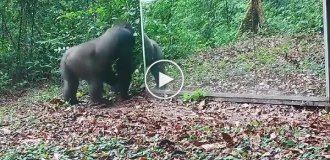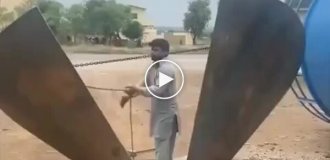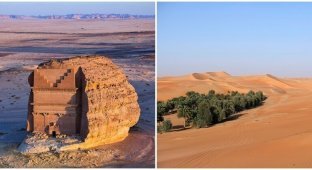What kind of chain of strange holes can be seen in the Iranian desert (7 photos)
In Iran, there is an unusual, very ancient and quite large-scale attraction, which, in general, even today is not particularly advertised, and until recently, no one really knew about it. But she gives an understanding of how people in ancient times obtained water in the desert, where there is no water. Moreover, the age of the building is estimated as at least 3 thousand years, that is, we are talking about the times of the Persian Empire. 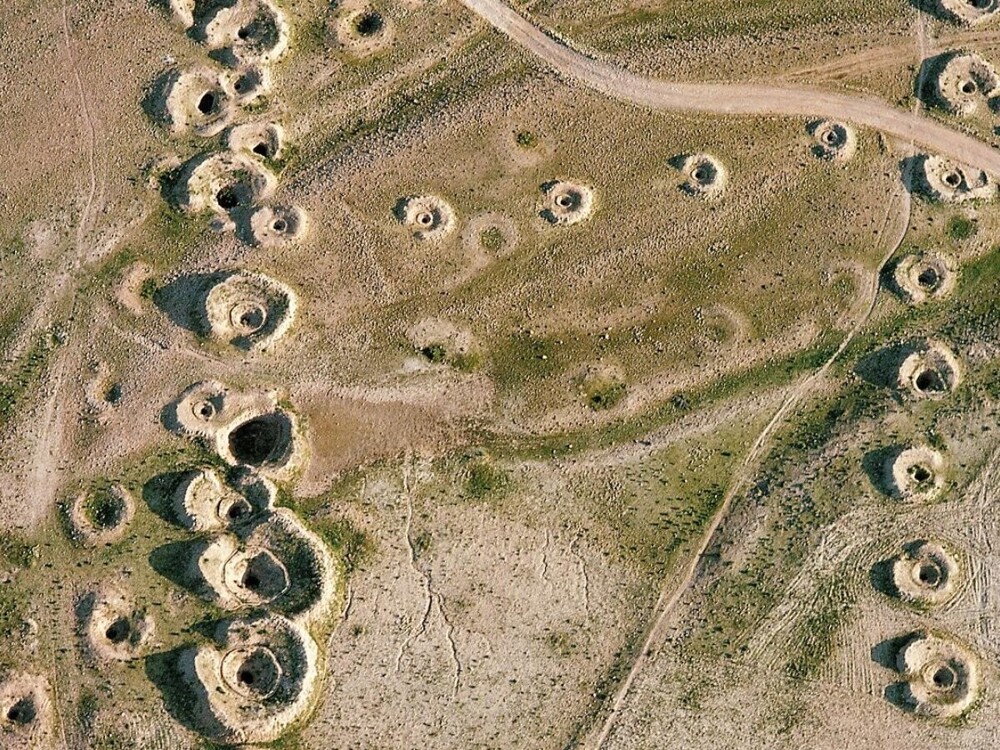
Mysterious holes in the desert? No riddles - this is Zarch Qanat
At the end of 2022, the award for the "preservation of cultural heritage" from UNESCO received the Iranian Zarch Qanat, which back in 2016 was named a World Heritage Site. Obviously, at that time there were some money was allocated, and upon completion of certain works, Zarch Qanat and received an award from UNESCO.
The news occasion has also become an occasion for advertising sights, and many in general for the first time learned about the existence long underground tunnels, laid under the sands of the desert, because according to In fact, we are talking about an ancient aqueduct, and underground.
The word qanat is translated from Persian as "channel" (there is another name - kyariz), and Zarch Qanat (Zarch, Zarakh, Zarach and etc. - there are several transcriptions) is located in the central part Iran, near the town of Zarch. However, they usually write that this rope is located 5 km west of the city of Yazd (it is larger and more famous). 
One of the cities is visible in the corner of the photo, but these points in the desert are what we will talk about in the desert
The terrain here is arid and deserted, ordinary rivers or even there are simply no streams. And the cities where people lived, and which once were on trade routes, water had to be provided. This water used not only for drinking and household needs, but also for irrigation land, for example - agriculture thanks to man-made underground rivers was well developed here.
For this, the Persians came up with the idea of making these canals-ropes - but it just sounds simple. Considering that they dug with their hands, and the total length of the same Zarch Qanat is estimated at about 80 kilometers - A lot of work has obviously been done.
Once again - for 80 kilometers, under ground, at a fairly large depth of 30-40 meters, a tunnel was dug, width and height of which at least allows a minimum of to one person. Well, isn't that a labor feat? 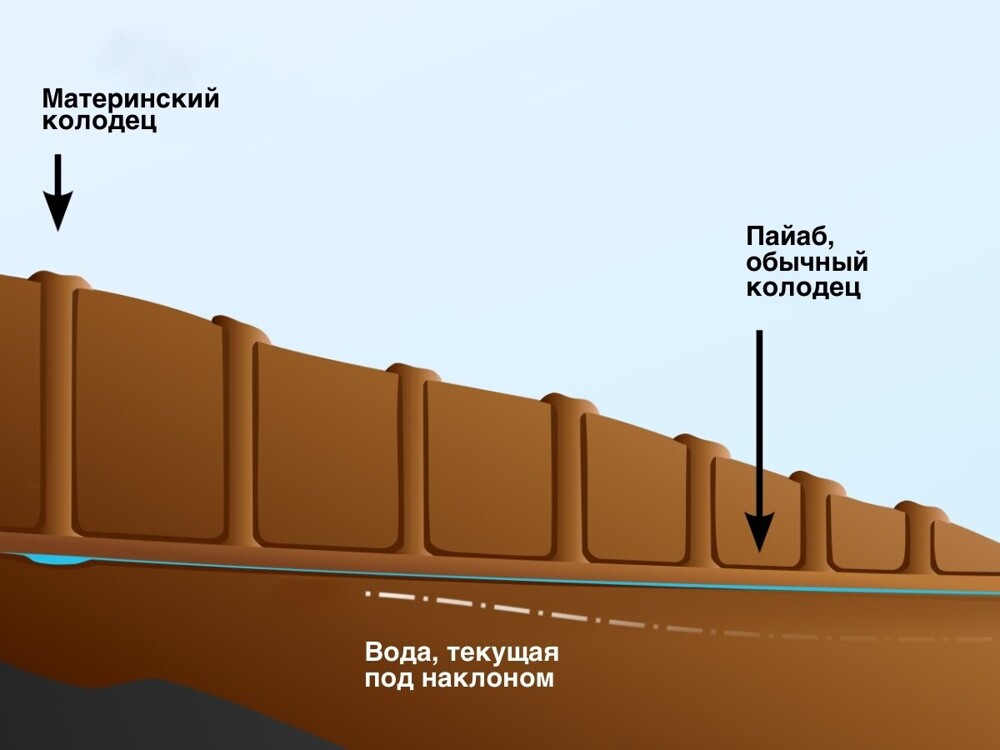
An approximate diagram of the operation of a rope (underground aqueduct)
At the same time, it must be understood that water through such a tunnel should go by gravity, that is, there must be a slope along the entire length, but verified so that there are no special differences in speed, so that avoid both washout and stagnant water.
Of course, Zarch Qanat is not the only example of such underground aqueducts in Iran (and in the world), but the largest and now the most famous. In addition, it consists purely technically of four ropes connected into one. How are ropes arranged?
There is the concept of "mother well", that is, the main water source for the entire canal. In this case, such a well is located near the village of Fakhraj, in a mountainous area, where water is already simpler. After finding a sufficiently powerful aquifer and digging well, the creation of the rope itself began, that is, the process of digging. 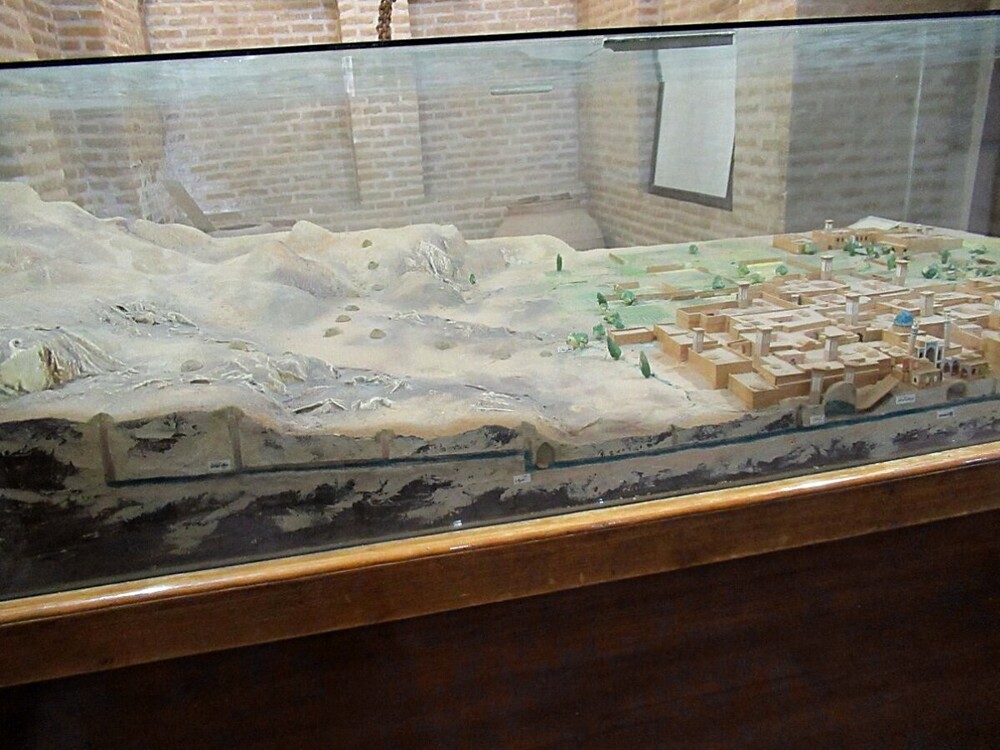
Such a plan of Zarch Qanat is exhibited in the local water museum. - from the mountains to the city (pay attention to the lines on the cut on the front plan)
And here is the most interesting. Actually stories about Zarch They like to illustrate Qanat with photos showing the chain small "wormholes" - such mini-craters that stretch for a great distance and at approximately the same distance from each other. It looks amazing and mysterious, of course - especially if you don’t know what it is.
So, these are wells, between which tunnels are dug. rope. They are called pāyābs (payabs) - a line in the desert, composed of of such wells, fully corresponds to the "route" of water underground. Obviously, these wells play an important role.
Firstly, soil was pulled through them, which remained while digging. Secondly, water was taken out of them. And thirdly, wells served as "service points" - thanks to them, channels ventilated, and in the event of any congestion, you can always understand between what wells the accident happened. 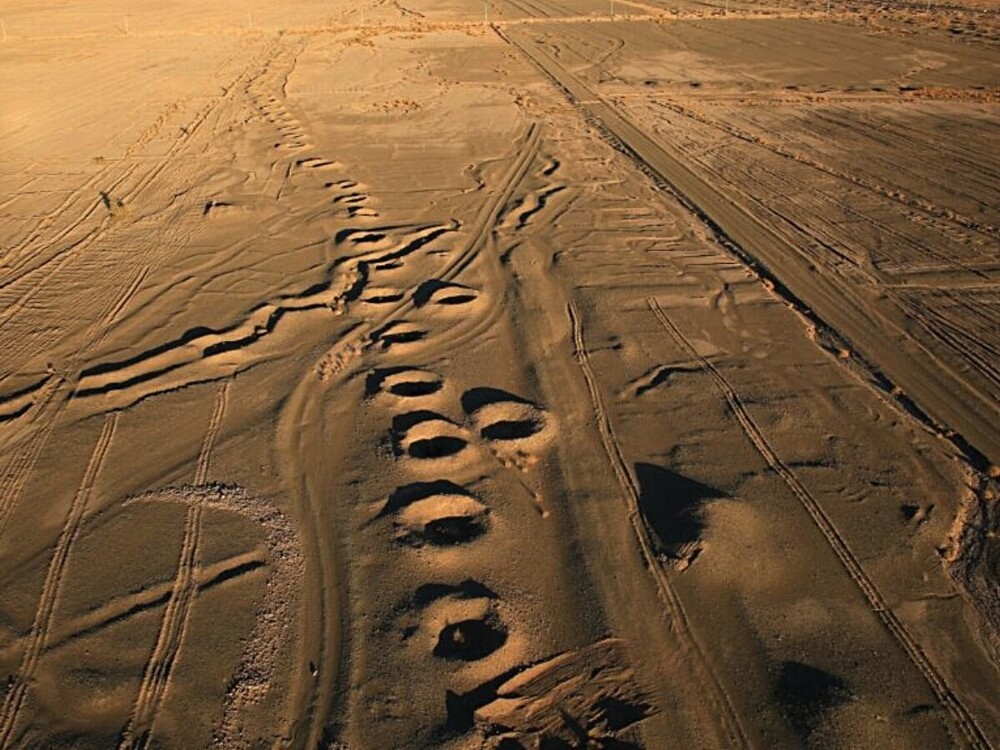
Now we know that such holes in the desert are called payabs.
It is worth noting that the distance between the payabs varies, but not much - in some places it is 20-30 meters, sometimes, apparently, less or more. The fact is that according to available information, Zarch Qanat includes about a thousand such wells - and this the length indicated above. Even if you do not take into account those wells that located in the settlements (in Zarcha and Yazd) - then on average distances should be greater.
But in this case, we will not delve into the calculations. (maybe only a specific section was meant, going through desert), let's delve into the rope channel itself.
Yes, several underground accesses are now open for tourists - UNESCO money was enough to restore the stairs, make a backlight, etc. Without any irony - perhaps it was not easy. Because we are still not talking about deserted wells, the width which usually allows only one person to climb there, and more wide galleries already in the city. 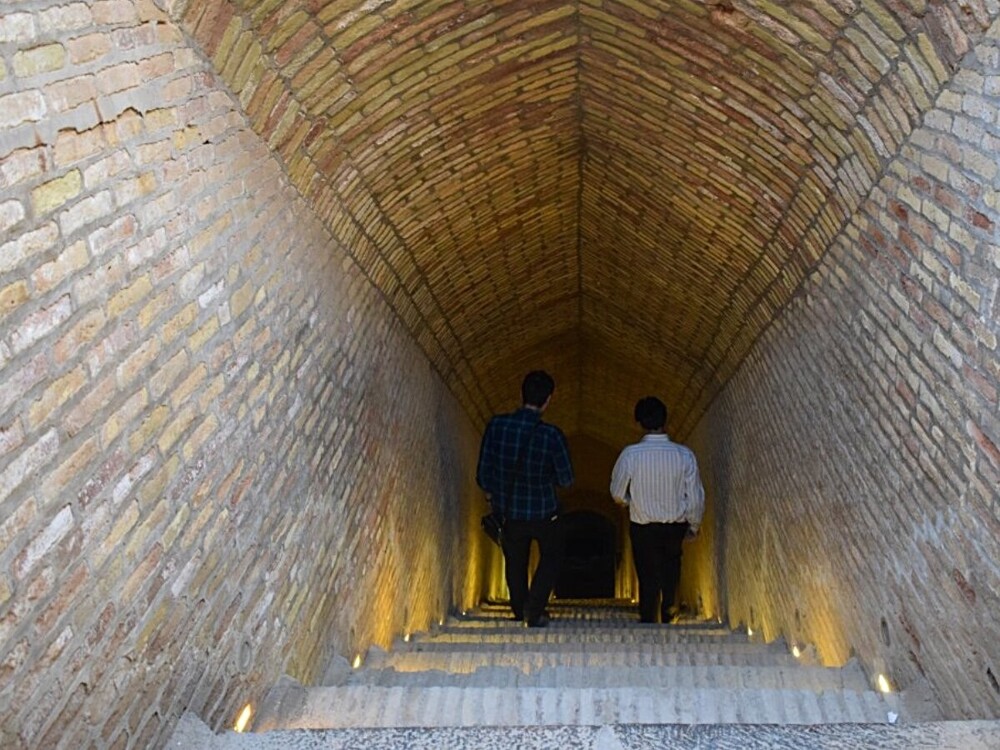
One of the slopes in Zarch Qanat in the city of Zarch
Interestingly, tourists often share reviews and stories about how the locals - sometimes in some kind of shop, sometimes just on the street, literally pushing some kind of inconspicuous cover - they show the wells, which "have always been here" and in which, if you listen, you can hear the sound of water.
However, if somewhere they abuse gullibility travelers, then not everywhere, since the presence of wells on the territory cities are a fact.
Moreover, the fact is the presence of "springs" and even pools in local mosques, which, apparently, were originally placed on a place where access to water flowing through Zarch Qanat was provided. Hurry in total, there were already payabs, the water level in which was enough high, and the water itself rose to the surface of the earth. So artificial oasis. 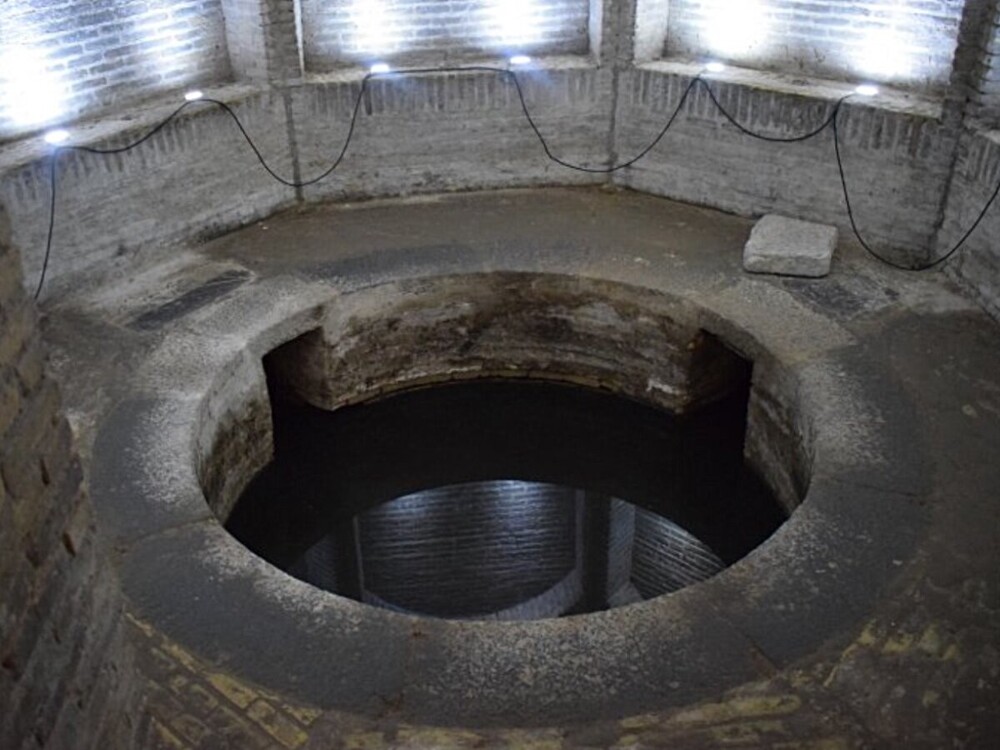
There are also such wells in the city, which are also part of Zarch Qanat - in them the water rises high
You can find many more details about Zarch Qanat. Let's say his mother well is in salty soil, so in the heat - apparently, when the water level in the canal drops - it is also for the "final users" becomes salty.
By the way, there was not always a need to deliver water over such a long distance, sometimes the length of the rope was only several tens or hundreds of meters.
And it was these man-made underground rivers that saved the local inhabitants during the invasion of all sorts of strangers. However, with such intrusions bind and the destruction of the ropes, which, as we have said, on Iranian territory was numerous. Perhaps the underground paths allowed many to flee from attacks and go over long distances.
Who knows what distances these underground way - after all, the ropes could be connected to each other (as the same Zarch Qanat, consisting of several ropes).
By the way, according to one of the theories, it was from the Persians the technology of creating such underground aqueducts went around the world. Their counterparts are found not only in relatively close Syria, Pakistan or Spain, but even in America and China.







